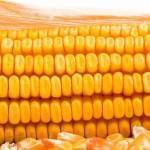Bioengineered Crops Increase Globally

Bioengineered crops used in feeds for horses and other animals are currently grown on over one billion hectares (2.5 billion acres) around the world. Plantings of bioengineered crops rose 10% in 2010 over the previous year, according to figures published in World Grain. Corn, soybeans, cotton, and canola lead the list of bioengineered crops worldwide. Genetically modified (GM) grains are used in the biofuel industry as well as in feed products for animals.
Also known as biotech, GM, or GMO (genetically modified organism), bioengineered crops have been designed to enhance desirable characteristics. For example, GM strains of wheat are resistant to insect damage; GM corn continues to thrive during periods of drought; and GM soybeans have an improved yield.
Proponents say that bioengineering allows more efficient use of cropland, while detractors fear possible health or environmental impacts. Research has so far failed to prove specific dangers from the consumption of modified grains by horses, other livestock, or humans, but consumers still express concerns about safety.
Some countries have outlawed cultivation and importation of GMOs, but others have embraced the new technology. The modified strains have been particularly popular in developing countries where demand is high for human food and livestock feed.
The United States produces the greatest total of biotech crops. Brazil is the world’s second leading grower of biotech crops, with corn and soybeans at the top of that country’s production list. Argentina ranks third. In South Africa, three-fourths of the corn grown is GM strains. Eight countries in the European Union grow either corn or potatoes from bioengineered strains. About 5% of all grain used in Australian animal feeds is from GM types, and around 68% of New Zealand’s imported soybean meal is from GM strains.
One study entitled “Animal nutrition with feeds from genetically modified plants” concluded, “During the last few years many studies have determined the nutrient value of GM feeds compared to their conventional counterparts and some have additionally followed the fate of DNA and novel protein. The results available to date are reassuring and reveal no significant differences in the safety and nutritional value of feedstuffs containing material derived from the so-called first generation of genetically modified plants (those with unchanged gross composition) in comparison with non-GM varieties.” However, further study is needed to determine the effect, if any, on horses and other animals consuming GM grains over long periods of time.








